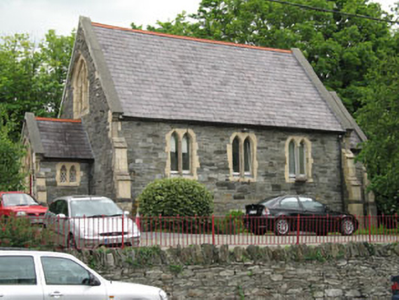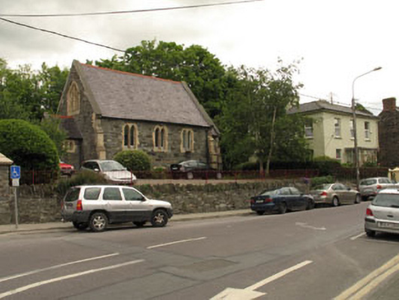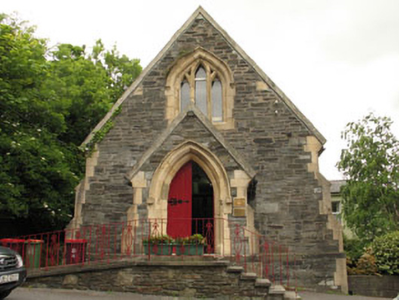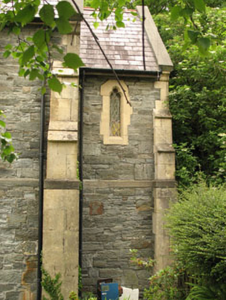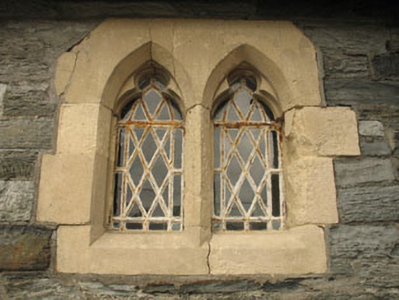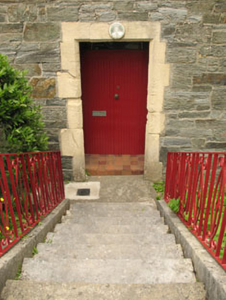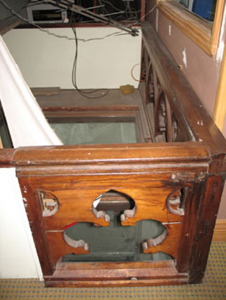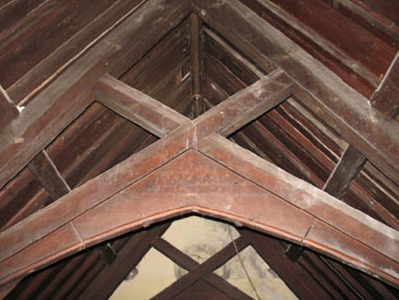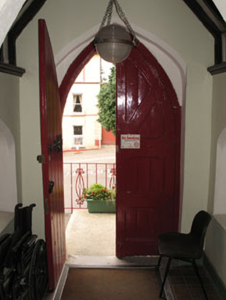Survey Data
Reg No
20834080
Rating
Regional
Categories of Special Interest
Architectural, Artistic, Historical, Social, Technical
Previous Name
Bantry Wesleyan Methodist Chapel
Original Use
Church/chapel
In Use As
Surgery/clinic
Date
1865 - 1870
Coordinates
99638, 48498
Date Recorded
13/06/2008
Date Updated
--/--/--
Description
Freestanding gable-fronted double-height former Methodist church, built 1866, having gable-fronted porch (west), three-bay nave and single-bay chancel (east). Sold, 1983. Pitched slate roofs having ceramic ridge tiles, render coping and uPVC rainwater goods. Coursed rubble stone walls having sandstone and rubble stone buttresses, string course and sandstone quoins. Paired pointed arch openings to nave having tooled sandstone surrounds and sills with uPVC windows. Tripartite pointed arch openings to west elevation gable with spandrels, sandstone surrounds, sandstone sills and hood moulding with decorative stops. Paired trefoil-headed openings to porch having cast-iron fixed quarry glazing and sandstone block-and-start surrounds. Trefoil-headed opening to chancel with cast-iron fixed quarry glazing and sandstone block-and-start surround. Pointed arch door opening to porch having double-leaf timber battened door with wrought-iron strap hinges, moulded sandstone surround and sandstone hood moulding with squared stops. Square-headed door opening with double-leaf timber battened door. Flight of stone steps and wrought-iron railing to south entrance. Carved timber truss roof to interior. Rubble stone boundary walls to site, having recent railings and gate.
Appraisal
The simple plan of this church is typical of Methodist churches throughout Ireland. In common with Methodist principles, it is a relatively unadorned building, though it demonstrates fine craftsmanship both in its masonry construction and interior joinery. The rubble stone, yellow sandstone and purple slate utilised in its construction add colour and textural interest to the streetscape. It is an interesting reminder of the religious diversity of the town and surrounding area in the nineteenth century.

